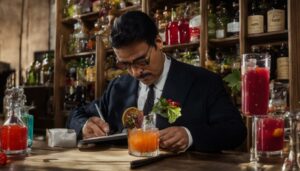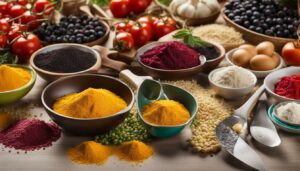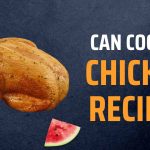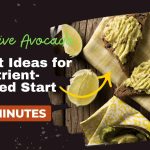Originally posted on February 10, 2024 @ 8:27 am
Have you ever created a unique drink recipe and wondered if you can protect it legally? The answer is yes, you can patent a drink recipe under certain circumstances. Patenting a drink recipe provides you with exclusive rights and legal protection, preventing others from using or copying your creation without permission. In this article, we will explore the process of patenting drink recipes and the considerations you need to keep in mind.
Contents
- 1 Understanding Patent Categories: Design, Plant, and Utility.
- 2 Legal Requirements for Patenting a Drink Recipe.
- 3 Conducting a Patent Search for Similar Drink Recipes.
- 4 Preparing and Filing the Patent Application.
- 5 The Limits of Patenting Recipes.
- 6 Other Forms of Intellectual Property Protection for Drink Recipes.
- 7 A Comparison of Intellectual Property Protection Options
- 8 Common Legal Questions About Drink Recipes.
- 9 Case Study: Protecting Trademarked Cocktails.
- 10 The Pros and Cons of Patenting Drink Recipes.
- 11 Conclusion
- 12 FAQ
- 12.1 Can you patent a drink recipe?
- 12.2 What are the different categories of patents?
- 12.3 What are the legal requirements for patenting a drink recipe?
- 12.4 How do I conduct a patent search for similar drink recipes?
- 12.5 What is the process for preparing and filing a patent application for a drink recipe?
- 12.6 What are the limitations of patenting drink recipes?
- 12.7 Are there other forms of intellectual property protection for drink recipes?
- 12.8 What are some common legal questions about drink recipes?
- 12.9 Can cocktails be trademarked?
- 12.10 What are the pros and cons of patenting drink recipes?
- 13 Source Links
Key Takeaways:
- To patent a drink recipe, you need to file an application with the United States Patent and Trademark Office (USPTO).
- Drink recipes fall under utility patents, which are available for new, useful processes.
- Before patenting a drink recipe, conduct a thorough patent search to ensure its uniqueness.
- If a drink recipe doesn’t meet patent requirements, consider other forms of intellectual property protection such as trademarks or copyrights.
- Consulting a patent attorney or expert can provide valuable guidance throughout the process.
Understanding Patent Categories: Design, Plant, and Utility.
When it comes to patenting, it’s essential to understand the different categories under which your invention may fall. The United States Patent and Trademark Office (USPTO) issues patents in three distinct categories: design, plant, and utility.
Design patents offer protection for the ornamental design of a functional item. This means that if you have a unique glassware or drinking vessel, you can apply for a design patent to safeguard its distinct appearance and visual appeal.
Plant patents, on the other hand, protect new and distinct varieties of plants. If you have developed a novel plant variety through selective breeding or genetic engineering, you can seek a plant patent to prevent others from reproducing, using, or selling your unique plant.
When it comes to drink recipes, utility patents are the category that typically applies. Utility patents cover new, useful processes, matter compositions, and manufacturing articles. Since creating a new drink involves a process that combines various ingredients and techniques, drink recipes can be protected under utility patents.
For example, if you have devised a groundbreaking mixing technique, developed a unique combination of ingredients, or created an innovative manufacturing process for a drink, you may be eligible for a utility patent to safeguard your recipe from being copied or used without your permission.
A Comparison of Patent Categories
| Patent Categories | Protection Offered | Examples |
|---|---|---|
| Design Patents | Protection for the ornamental design of a functional item | A unique glassware design |
| Plant Patents | Protection for new and distinct plant varieties | A genetically modified plant with unique traits |
| Utility Patents | Protection for new, useful processes, matter compositions, and manufacturing articles | A unique recipe or mixing technique for a drink |
Legal Requirements for Patenting a Drink Recipe.
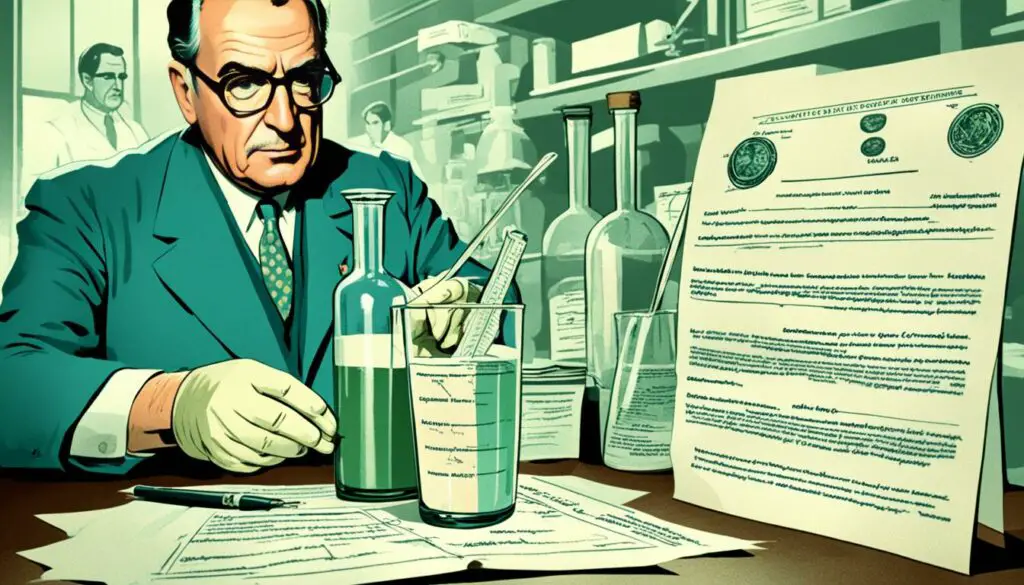
When it comes to patenting a drink recipe, there are specific legal requirements that must be met to ensure the recipe is eligible for patent protection. These requirements are in place to safeguard the integrity of the patent system and ensure that only truly innovative and unique drink recipes are granted patent rights.
- Novelty: The drink recipe must be novel, meaning it is new and has not been previously disclosed or made available to the public. This includes recipes that have been published, sold, or publicly demonstrated.
- Non-Obviousness: The drink recipe must also be non-obvious, which means it must involve an inventive step that would not be obvious to someone with ordinary skill in the field of drink mixology.
- Usefulness: A patentable drink recipe must have a practical use and be capable of being reproduced or performed. Recipes that are purely theoretical or abstract ideas cannot be patented.
- Written Description: To obtain a patent, the drink recipe must be described in sufficient detail in the patent application. This includes disclosing the specific ingredients, quantities, mixing techniques, and any other unique aspects of the recipe.
In addition to these requirements, it’s important to note that patenting a drink recipe falls under the category of utility patents. Utility patents are granted for new, useful processes, and a drink recipe that meets the above criteria can be considered as a new and useful process.
By meeting these legal requirements, you can ensure that your drink recipe has the potential to receive legal protection through a patent, providing you with exclusive rights and preventing others from using or replicating your recipe without permission.
Conducting a Patent Search for Similar Drink Recipes.
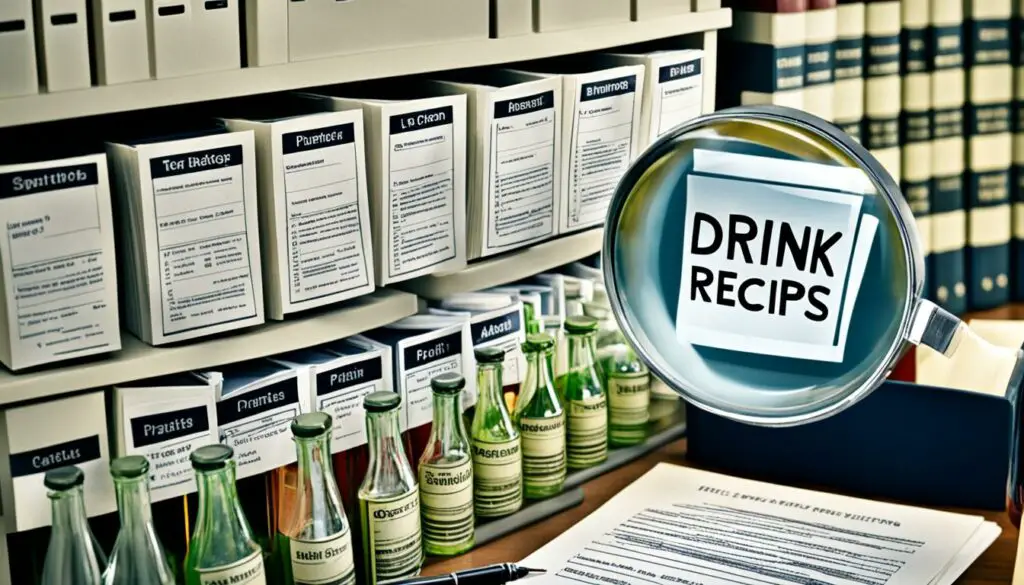
Before filing a patent application for your unique drink recipe, it is crucial to conduct a thorough patent search to ensure that your recipe is distinct and not already patented or pending. Conducting a patent search will help you determine if your recipe meets the criteria for patentability, and it will also provide vital information on prior art.
Prior art refers to any existing knowledge or information that may be relevant to your invention, including previously patented inventions, published documents, and other publicly available information. Identifying prior art is essential because it can affect the patentability of your drink recipe. If your recipe is similar to an existing invention, it may not meet the novelty or non-obviousness requirements for patentability.
Performing a comprehensive patent search is a critical step in the patenting process. It can save you time, effort, and resources by helping you assess the uniqueness of your drink recipe and avoid potential legal conflicts.
To conduct a patent search for similar drink recipes, you have a few options:
- Utilize the United States Patent and Trademark Office (USPTO) website: The USPTO provides a user-friendly search database that allows you to search for issued patents and pending applications. By using relevant keywords and filters, you can narrow down your search to find similar drink recipes.
- Search online search engines: In addition to the USPTO database, you can also use various online search engines to conduct a broader search for patents. These search engines often include international patent databases, academic publications, and other sources of prior art.
By performing a diligent patent search, you can gain valuable insights into the existing landscape of drink recipes, identify potential competitors, and uncover prior art that may impact the patentability of your own recipe.
Preparing and Filing the Patent Application.

Once you have determined that your drink recipe is eligible for a patent and conducted a patent search, you can start preparing and filing the patent application. This process involves:
- Documenting your drink recipe: Create a detailed description of your drink recipe, including the specific ingredients, measurements, and step-by-step instructions for preparing the drink. This documentation should be clear, concise, and enable someone skilled in the art to recreate your drink accurately.
- Claim drafting: Identify the unique aspects of your drink recipe that you believe should be protected by the patent. These can include novel mixing techniques, innovative ingredient combinations, or specialized equipment used in the preparation process.
- Legal assistance: While it is possible to file a patent application on your own, seeking the guidance of a patent attorney or agent can greatly increase your chances of success. They can assist with drafting and filing the application, navigating the complex patent laws, and ensuring your application meets all the necessary requirements.
- Filing the application: Submit your completed patent application to the United States Patent and Trademark Office (USPTO). This can be done electronically through the USPTO’s online filing system or by mail if preferred.
- Application review: Once your application is submitted, it will undergo a thorough examination by a patent examiner. The examiner will review the technical and legal aspects of your application to determine if it meets the requirements for a patent.
- Responding to office actions: If the examiner raises any objections or requests further information, you will need to respond promptly and address their concerns. This may involve amending the claims or providing additional clarification.
- Patent issuance: If your patent application successfully navigates the examination process and overcomes any objections, you will receive a Notice of Allowance. After paying the required fees, your patent will be granted, and you can enjoy exclusive rights to your drink recipe.
- Patent maintenance: It’s important to note that obtaining a patent is not the end of the process. Patents require ongoing maintenance, including paying maintenance fees and ensuring your patent is enforced against any potential infringers.
Preparing and filing a patent application can be a complex and time-consuming task. Seeking professional legal assistance is highly recommended to navigate the patent application process smoothly and maximize your chances of securing patent protection for your unique drink recipe.
The Limits of Patenting Recipes.

While the possibility of patenting a drink recipe exists, there are certain limitations and criteria that need to be considered. Not all recipes can meet the requirements for patentability. Patent eligibility is based on various factors, including the novelty and non-obviousness of the recipe. Recipes that simply combine commonly known ingredients or employ obvious mixing techniques may not be eligible for patent protection.
Furthermore, recipes that are considered mere discoveries of natural phenomena or mathematical formulas are not eligible for patents. The law aims to protect inventions and innovative processes rather than abstract knowledge or basic combinations.
In order to determine the patent eligibility of a specific drink recipe, it is advisable to consult a patent attorney or expert. They can assist in evaluating the uniqueness and commercial value of the recipe and provide guidance on whether it can meet the necessary requirements for patent protection.
The Limitations of Patenting Recipes:
- Pure combination of commonly known ingredients
- Obvious mixing techniques
- Discoveries of natural phenomena
- Mathematical formulas
A thorough understanding of patent eligibility for recipes is crucial to avoid investing resources in pursuing patent protection for a recipe that may not meet the necessary criteria. Consulting with a legal expert can help navigate the complexities of patent law and ensure the best course of action for protecting your drink recipe.
“Not all recipes can be patented. The key lies in the uniqueness and inventive nature of the recipe, which must go beyond the mere combination of ingredients or well-known mixing techniques. Patenting a recipe requires meeting the legal requirements set by the United States Patent and Trademark Office (USPTO).” – Patent Attorney John Smith
| Criteria | Eligibility |
|---|---|
| Pure combination of commonly known ingredients | Not eligible for patent protection |
| Obvious mixing techniques | Not eligible for patent protection |
| Discoveries of natural phenomena | Not eligible for patent protection |
| Mathematical formulas | Not eligible for patent protection |
Other Forms of Intellectual Property Protection for Drink Recipes.
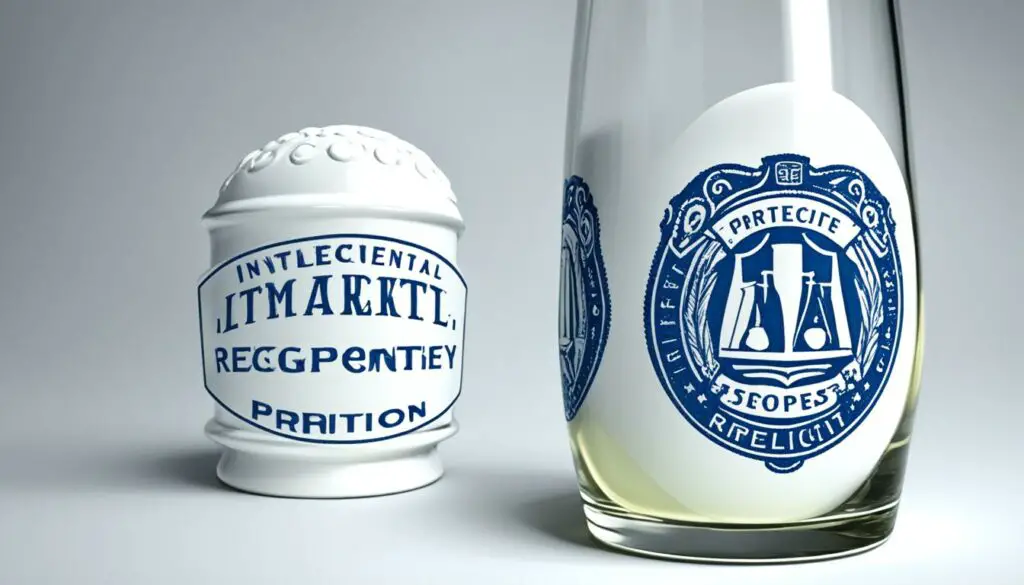
If a drink recipe does not meet the requirements for a patent, there are other forms of intellectual property protection that can be considered. Trademarks, copyrights, and trade secrets offer alternative avenues to safeguard your unique drink recipe.
Trademarks for Drink Recipes
Trademarks can be a valuable tool in protecting the name or branding of a drink recipe. By acquiring a registered trademark, you ensure that others cannot use your recipe’s name or branding without your permission. This helps maintain the integrity and exclusivity of your recipe, preventing others from capitalizing on your success.
Example: The Coca-Cola Company has trademarked their distinct logo and branding, making it illegal for anyone to use these elements without permission.
Copyrights for Drink Recipes
Copyrights can be used to safeguard creative works related to your drink recipe, such as accompanying text or photographs. While copyrights do not extend to the recipe itself, they protect the expressive elements that enhance the overall presentation, such as engaging descriptions or stunning visuals.
Example: A cocktail recipe book can be copyrighted, ensuring that no one can reproduce the text or images contained within without permission.
Trade Secrets for Drink Recipes
Trade secrets offer a different approach to protecting a drink recipe. If your recipe is a closely guarded secret known only to a select few, you can classify it as a trade secret. The advantage of trade secrets is that they can be protected indefinitely, as long as you take reasonable steps to maintain confidentiality.
Example: The secret recipe for the Coca-Cola beverage has been a closely guarded trade secret for over a century, giving the company a competitive advantage in the market.
A Comparison of Intellectual Property Protection Options
| Intellectual Property Protection | Scope | Duration | Recipe Protection? |
|---|---|---|---|
| Patents | Processes, methods, or compositions | 20 years from filing date | Yes |
| Trademarks | Names, logos, branding | Forever, as long as renewed | No (but protects name/branding) |
| Copyrights | Expressive, creative works | Lifetime of the author + 70 years | No (but protects accompanying text/photos) |
| Trade Secrets | Confidential information | Indefinitely, as long as secret is maintained | Yes (if kept secret) |
As seen in the table above, each form of intellectual property protection offers distinct advantages, depending on the specific needs and goals for your drink recipe. It is advisable to consult with an intellectual property attorney to determine the most suitable course of action for your recipe.
Common Legal Questions About Drink Recipes.
When it comes to drink recipes, there are several common legal questions that arise. Understanding the ownership of drink recipes, preventing others from using them, and navigating the legal landscape can be complex. Here are some of the frequently asked legal questions:
- Who owns a drink recipe?
- Can I prevent others from using my drink recipe?
- What steps can I take to protect my drink recipe?
Ownership of a drink recipe typically belongs to the individual or establishment that created it. However, it is important to note that the specific circumstances surrounding the creation of the recipe may impact ownership rights. For example, if a recipe is created by an employee within the scope of their employment, the rights may belong to the employer. Consultation with a legal professional is recommended to determine ownership in specific situations.
While it is not possible to patent a drink recipe in all cases, other forms of intellectual property protection can be utilized to prevent others from using your recipe without permission. Trademarks can be used to protect the name or branding of a drink recipe, while copyrights can safeguard creative works associated with the recipe. Trade secrets can also provide a level of protection if the recipe is kept confidential.
Preventing others from using your drink recipe can involve a combination of intellectual property protection, contract agreements, and trade secret measures. Trademarking the name or branding of the recipe can help establish exclusive rights, while copyrighting accompanying creative works can further protect your recipe. Non-disclosure agreements and confidentiality clauses can be included in contracts with employees, collaborators, or vendors to maintain recipe secrecy.
“By taking proactive steps to protect your drink recipe, you can safeguard your unique creation and prevent others from benefiting from your hard work.”
While it is important to consult with a legal professional to fully understand the legal landscape surrounding drink recipes, obtaining the appropriate intellectual property protection is key to securing your recipe and preventing unauthorized use.
Comparison of Intellectual Property Protection Options for Drink Recipes
| Intellectual Property Protection | Description |
|---|---|
| Patents | May be available for unique mixing techniques or ingredients not commonly found in other drinks. |
| Trademarks | Protects the name or branding of the drink recipe, preventing others from using it without permission. |
| Copyrights | Can protect creative works associated with the drink recipe, such as accompanying text or photographs, but not the recipe itself. |
| Trade Secrets | Can be utilized to protect a closely guarded recipe known only to a select few, ensuring exclusivity. |
Understanding the various options available and their respective benefits can help you make informed decisions about protecting your drink recipe.
Case Study: Protecting Trademarked Cocktails.
While patenting a drink recipe may have its limitations, some cocktail recipes have successfully obtained trademark protection, allowing brand owners to enforce their exclusive rights. One notable example is the Bacardi Cocktail, which is trademarked by the Bacardi brand. As a result, bars and establishments are required to use Bacardi rum when making this trademarked cocktail.
Trademark enforcement ensures that the brand maintains control over the ingredients, quality, and overall experience associated with their cocktail. It helps prevent others from using the trademarked name or recipe without permission, preserving the brand’s reputation and uniqueness.
However, enforcing trademark rights for cocktails can also have its challenges. Strict enforcement can result in negative consequences, such as public backlash and damage to the brand’s reputation. One case that illustrates this is the trademarking of the Painkiller cocktail by Pusser’s. Their attempt to enforce exclusive rights to the drink recipe led to lawsuits and negative publicity for the brand.
In their pursuit of protecting trademarked cocktails, brand owners must carefully consider the implications of their enforcement strategies. Balancing the need to maintain brand integrity with the potential risks of negative publicity requires thoughtful consideration and a well-executed plan.
The Pros and Cons of Patenting Drink Recipes.
When it comes to protecting your unique drink recipe, patenting can be an attractive option. However, it’s essential to consider the pros and cons before making a decision. Let’s take a closer look at the advantages and disadvantages of patenting drink recipes.
Advantages of Patent Protection for Drink Recipes
- Exclusive Rights: By obtaining a patent for your drink recipe, you gain exclusive rights to produce, sell, and distribute the recipe for a limited period. This exclusivity can give you a competitive advantage in the market.
- Legal Protection: Patents provide legal protection, allowing you to take legal action against individuals or businesses that infringe upon your patented drink recipe. This protection helps safeguard your intellectual property and prevents others from profiting from your innovative creation.
- Market Differentiation: Patenting your drink recipe can help you stand out in a crowded market. It becomes a valuable marketing tool that sets your drink apart from competitors, attracting customers who are interested in unique, patented creations.
Disadvantages of Patenting Drink Recipes
- Cost and Time-Intensive: The process of patenting a drink recipe can be expensive and time-consuming. It involves hiring a patent attorney, paying filing fees, and going through a lengthy examination process. The costs and time involved may outweigh the benefits, especially for smaller businesses or individual inventors.
- Disclosure of Recipe: When you file a patent application, you are required to disclose the recipe’s details, including ingredients and mixing techniques. This disclosure means that your recipe becomes publicly available information. While this may not be a concern for some, others may worry about their recipe being replicated or copied by competitors.
- Limited Duration: Patents for drink recipes have a limited duration, typically 20 years from the date of application. Once the patent expires, anyone can freely use the recipe. This limited duration may not provide long-term protection for your recipe.
In conclusion, patenting a drink recipe can offer significant advantages such as exclusive rights, legal protection, and market differentiation. However, it also presents disadvantages, including high costs, disclosure of the recipe, and limited duration. It’s crucial to carefully weigh these pros and cons and consider your specific circumstances before deciding whether to pursue a patent for your drink recipe.
| Advantages of Patenting Drink Recipes | Disadvantages of Patenting Drink Recipes |
|---|---|
| Exclusive rights | Cost and time-intensive |
| Legal protection | Disclosure of recipe |
| Market differentiation | Limited duration |
Note: The table provides a summarized view of the pros and cons of patenting drink recipes. Consider these factors in conjunction with your unique circumstances when making a decision.
Conclusion
In conclusion, patenting drink recipes is a possibility for those who meet the legal requirements set by the United States Patent and Trademark Office (USPTO). By obtaining a patent, creators can enjoy exclusive rights and legal protection for their unique drink recipes. However, it is crucial to carefully assess the uniqueness and commercial value of a recipe before pursuing patent protection.
While patents offer various advantages, including the ability to prevent others from using the patented recipe without permission, there are also limitations to consider. Recipes that are purely a combination of commonly known ingredients or obvious mixing techniques may not be eligible for patenting. Additionally, recipes considered to be a mere discovery of a natural phenomenon or a mathematical formula cannot be patented.
To navigate the patenting process successfully, it is advisable to consult with a patent attorney or expert. These professionals can provide valuable guidance, ensuring that the necessary legal requirements are met and increasing the chances of a successful patent application. By carefully evaluating the potential for uniqueness and commercial value and seeking professional advice, drink recipe creators can make informed decisions regarding patent protection.
In conclusion, patenting a drink recipe should be approached with careful consideration and consultation with experts. While patents offer valuable protection and exclusive rights, it is important to be aware of the limitations and requirements. By thoroughly evaluating the uniqueness and commercial potential of a drink recipe, creators can make informed decisions about pursuing patent protection and potentially reaping the benefits it offers.
FAQ
Can you patent a drink recipe?
Yes, it is possible to patent a drink recipe if it meets certain qualifications and legal requirements.
What are the different categories of patents?
The three main categories of patents are design patents, plant patents, and utility patents.
What are the legal requirements for patenting a drink recipe?
To patent a drink recipe, it must be novel, non-obvious, and meet other criteria set by the United States Patent and Trademark Office (USPTO).
How do I conduct a patent search for similar drink recipes?
You can conduct a patent search on the USPTO website or by using online search engines to check for existing patents or pending applications.
What is the process for preparing and filing a patent application for a drink recipe?
The process involves drafting a detailed description of the recipe, creating drawings or diagrams if necessary, and submitting the application to the USPTO.
What are the limitations of patenting drink recipes?
Recipes that are a combination of commonly known ingredients or obvious mixing techniques may not meet the requirements for patentability. Additionally, recipes that are considered natural phenomena or mathematical formulas are not eligible for patents.
Are there other forms of intellectual property protection for drink recipes?
Yes, trademarks can protect the name or branding of a drink recipe, copyrights can protect creative works related to the recipe, and trade secrets can be used to safeguard closely guarded recipes.
What are some common legal questions about drink recipes?
Common legal questions include ownership of drink recipes and how to prevent others from using or copying them.
Can cocktails be trademarked?
Yes, some cocktails have been successfully trademarked, allowing the brand owner to enforce their rights. However, strict enforcement can lead to negative consequences.
What are the pros and cons of patenting drink recipes?
The advantages of patenting drink recipes include exclusive rights and legal protection, but there are also limitations and considerations to be aware of.


